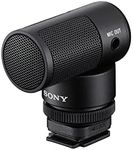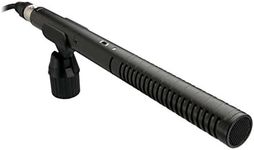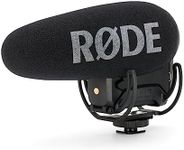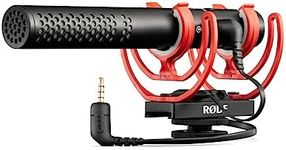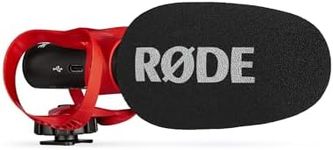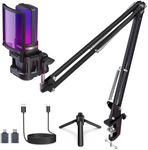Buying Guide for the Best Shotgun Microphones
Choosing the right shotgun microphone can significantly enhance the quality of your audio recordings, whether you're working on film, television, or live events. Shotgun microphones are highly directional, meaning they pick up sound from a specific area while minimizing background noise. To find the best fit for your needs, it's important to understand the key specifications and how they impact performance. Here are the main specs to consider when selecting a shotgun microphone.Polar PatternThe polar pattern of a shotgun microphone describes how it picks up sound from different directions. The most common pattern for shotgun mics is the supercardioid or hypercardioid, which captures sound primarily from the front while rejecting noise from the sides and rear. This is crucial for isolating the subject's voice in noisy environments. If you need to capture sound from a very specific direction, a hypercardioid pattern is ideal. For slightly more ambient sound, a supercardioid pattern might be better.
Frequency ResponseFrequency response refers to the range of frequencies a microphone can capture. A flat frequency response means the mic can pick up a wide range of sounds accurately, from low bass to high treble. This is important for ensuring that all elements of the sound are captured clearly. If you're recording dialogue, a frequency response that emphasizes mid-range frequencies (where human speech resides) can be beneficial. For more general use, a wider frequency response is preferable.
SensitivitySensitivity measures how well the microphone converts acoustic sound into an electrical signal. Higher sensitivity means the mic can pick up quieter sounds more easily, which is important in controlled environments or when the subject is at a distance. If you're recording in a quiet setting or need to capture subtle sounds, look for a microphone with higher sensitivity. For louder environments, lower sensitivity might help avoid distortion.
Self-NoiseSelf-noise is the inherent noise produced by the microphone itself. Lower self-noise is crucial for high-quality recordings, especially in quiet environments where any additional noise can be noticeable. If you're recording in a studio or a quiet location, choose a microphone with low self-noise to ensure the cleanest possible audio. In noisier settings, self-noise is less of a concern.
Max SPL (Sound Pressure Level)Max SPL indicates the highest sound level a microphone can handle before distorting. This is important if you plan to record loud sounds, such as live music or explosions. For general use, a max SPL of around 120-130 dB is sufficient. If you need to capture very loud sounds, look for a microphone with a higher max SPL rating.
Power RequirementsShotgun microphones often require external power, either through batteries or phantom power supplied by the recording device. Understanding the power requirements is important to ensure compatibility with your equipment. If you need a portable setup, a battery-powered microphone might be more convenient. For studio use, phantom power is typically more reliable and consistent.
Build Quality and DurabilityThe build quality and durability of a shotgun microphone are important, especially if you plan to use it in various environments. A well-built microphone can withstand the rigors of field recording and travel. If you need a microphone for outdoor or on-the-go use, look for one with a robust build and weather-resistant features. For studio use, durability is still important, but you might prioritize other features like sound quality.

